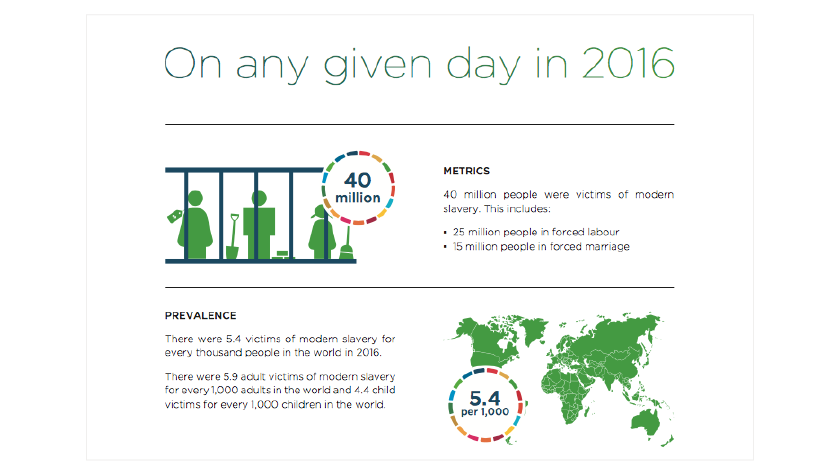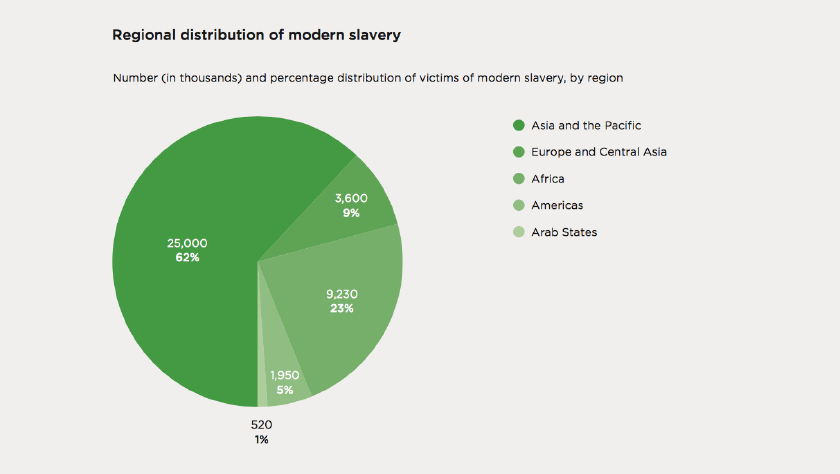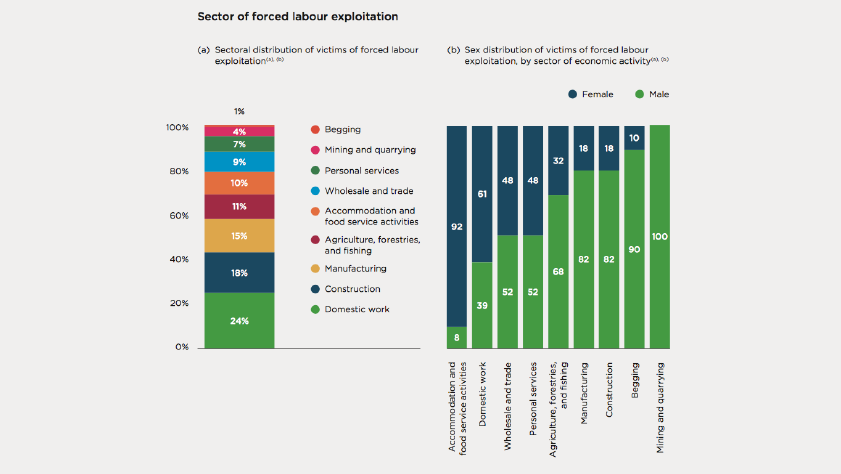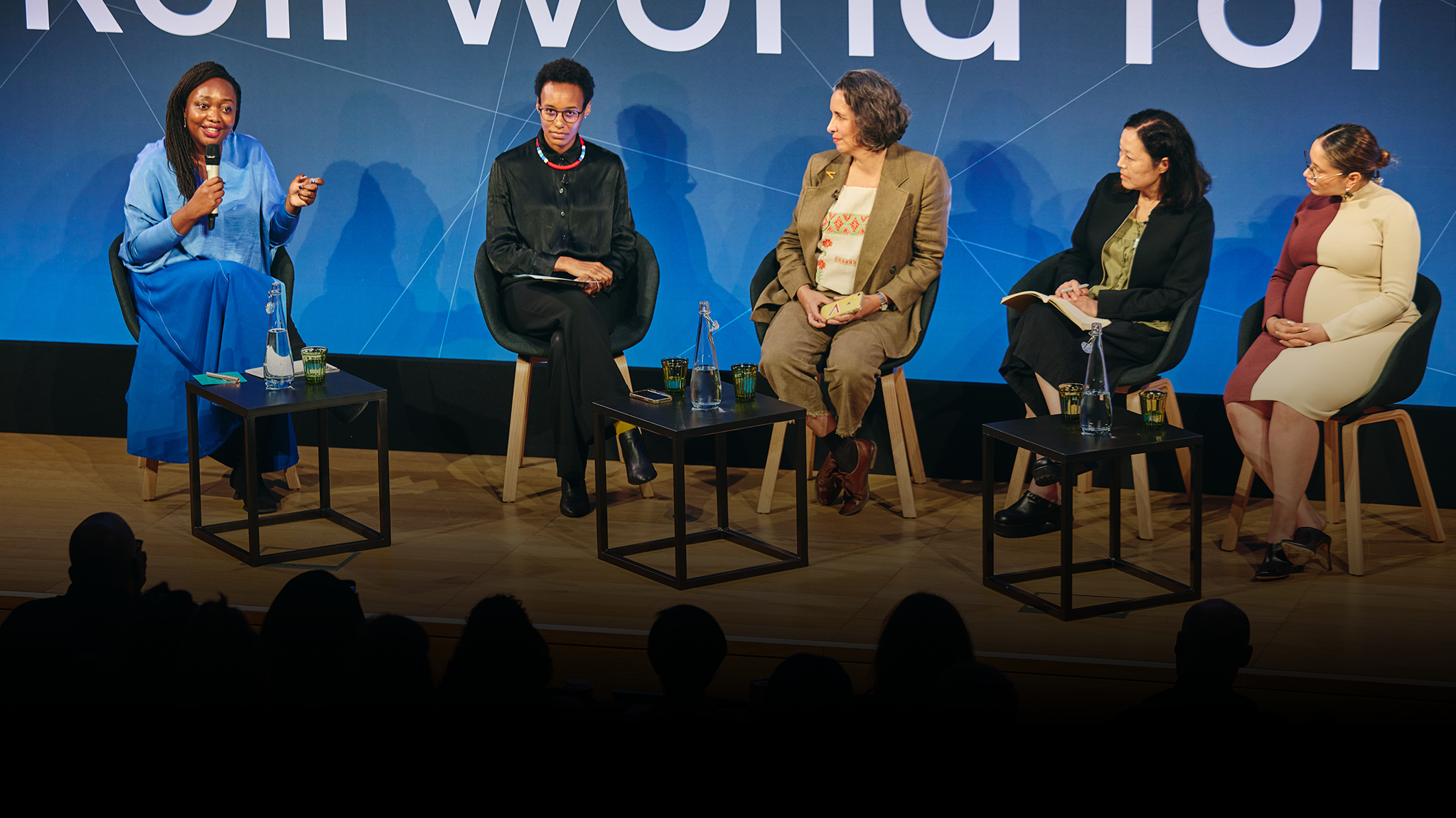What Will it Take to Free 40.3 Million Slaves?
Slavery is a modern scourge of shocking proportions. Some 40 million people live in slavery today, according to a report released last month from the U.N. affiliated International Labor Organization (ILO), the International Organization for Migration (IOM), and the Walk Free Foundation. One in every four slaves is a child. Seven in ten are women. By its very nature, modern slavery operates in the shadows, keeping its victims faceless and uncounted. Even this comprehensive survey is likely conservative.
“This is 40 million people who are not free to leave the situation, to refuse the exploitation that is being forced on them, or even to refuse or leave a marriage they have not chosen,” said Jacqueline Joudo Larsen Senior Research Manager, Walk Free Foundation, and co-author of the Global Estimates report. “This is happening in every region of the world.”
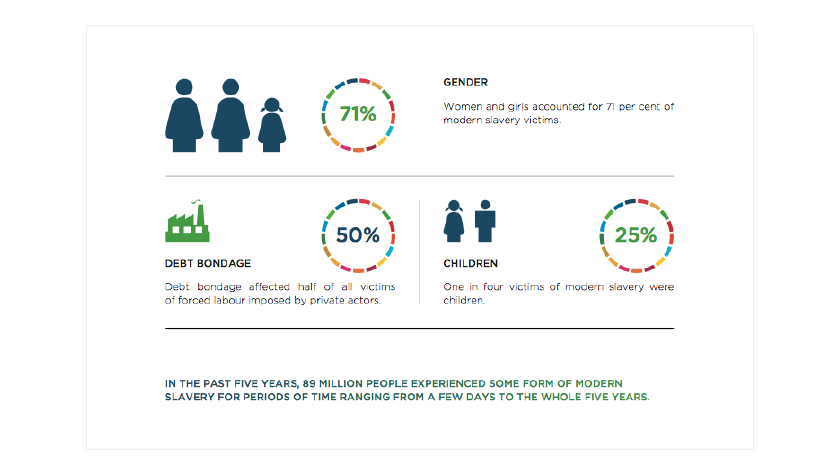 This collaborative report, “Global Estimates of Modern Slavery” from Alliance 8.7, puts this crisis in the highest resolution ever and outlines steps to reach the ambitious aim set by Sustainable Development Goal 8.7: eradicate slavery by 2025. Modern slavery in this context refers to forced labor, debt bondage, forced marriage, and other forms of slavery and human trafficking. “Modern slavery is not defined in law,” states the report. “It refers to situations of exploitation that a person cannot refuse or leave because of threats, violence, coercion, deception, and/or abuse of power.” Taking into account temporary conditions of bondage, the scale more than doubles: some 89 million people experienced some form of modern slavery for periods of time ranging from a few days to five years.
This collaborative report, “Global Estimates of Modern Slavery” from Alliance 8.7, puts this crisis in the highest resolution ever and outlines steps to reach the ambitious aim set by Sustainable Development Goal 8.7: eradicate slavery by 2025. Modern slavery in this context refers to forced labor, debt bondage, forced marriage, and other forms of slavery and human trafficking. “Modern slavery is not defined in law,” states the report. “It refers to situations of exploitation that a person cannot refuse or leave because of threats, violence, coercion, deception, and/or abuse of power.” Taking into account temporary conditions of bondage, the scale more than doubles: some 89 million people experienced some form of modern slavery for periods of time ranging from a few days to five years.
Data collection efforts like this are critical to understanding the roots of this problem, and give social entrepreneurs working to stop trafficking the insight they need to continue to develop and refine solutions. Interesting patterns emerge with the magnified picture this report creates. Men are primarily exploited in construction, manufacturing and agriculture/fishing, while exploitation of women and girls tends to be as domestic workers, and in the sex industry. The report shows there are countless ways people can be trapped in forced labor—no chains required.
“Nearly one quarter of victims had their wages withheld, or were prevented from leaving by threats of non-payment of due wages,” said Joudo Larsen. “Other forms of coercion included physical violence, threats against family, and for women, acts of sexual violence. Most victims suffered multiple forms of coercion from employers or recruiters.”
A Maturing Understanding of the Problem
The report was the product of a remarkably collaborative effort from three organizations, all pooling their data and drawing from surveys in 48 countries, involving more than 70,000 individual respondents across 50 languages. Still there are gaps. No reliable data was available in conflict zones and the US, Canada, Australia, and the UK were not surveyed because prevalence is limited and hidden.
“I don’t think there’s ever been a good U.S. prevalence estimate,” said Bradley Myles, CEO and President of Polaris (2017 Skoll Awardee). “It’s been overlooked. Our data suggests that there are 25 types of trafficking, and [global] estimates need to encapsulate all of those types. There could be a whole study done, just on the United States.”
Myles says this report collected a groundbreaking amount of primary data, relying on direct interviews rather than second party statistics. “Our understanding of the crime is maturing,” said Myles. “None of these numbers are suggesting that the crime has increased, the stock previous amount may have always been there. We’ve just gotten better at measuring it.”
Polaris has partnered with IOM to launch the forthcoming Counter-Trafficking Data Collaborative (CTDC), a web repository of data on human trafficking that protects the identity of victims. The CTDC will host primary data from global counter-trafficking organizations, including 45,000 victim records from the IOM and 31,000 from Polaris. The goal is a deepened understanding of the contexts in which those trafficked are most vulnerable.
The challenges of quantifying slavery
“Measuring modern slavery is difficult for a few reasons–differing definitions, hidden and difficult to access populations, and the sensitive nature of the information that needs to be collected,” said Joudo Larsen. “These challenges can, and will, be met as collaboration grows between governments, academia, and civil society.”
That collaboration will be critical to any concerted effort to scour supply chains for exploitation. “It’s noteworthy that the global estimates focus more on new commitments from governments and urge deeper engagement by the private sector to partner with civil society, unions, and governments to eliminate forced labor from supply chains,” said Shawn MacDonald, CEO of Verité (2007 Skoll Awardee), which prevents human trafficking by leveraging the power of multinational companies. “Companies and others should take note of the large number of forced labor cases in Africa, where we don’t hear as much discussion of efforts to reform supply chain practices.”
Routing out slavery in supply chains
Nina Smith, Chief Executive Director of GoodWeave (2005 Skoll Awardee), has worked to reform supply chains for two decades. “Child labor is happening in the informal, hidden and unregulated sectors,” she said. “So we have to tell our corporate leaders that they must work harder to know where their production is taking place and see everything down to the subcontractors of the subcontractors.”
But that’s not enough, says Smith. Those companies must also create programs on the ground that address the root causes, keep children enrolled in school, and train adults with skills for the decent work that alleviates the poverty that pushes kids into exploitative labor practices.
“The ultimate vision of sustainability is that people have to pay the real cost of creating a sustainable world,” said Smith. “The challenge is there’s little knowledge of what that cost is.”
So how realistic is the goal of eliminating modern slavery by 2025? On that question, Smith offers a measured response. “The pace of change has slowed,” she said. “But there’s certainly momentum. Some governments are taking it seriously, and the business community is moving in a new way. It could happen in our lifetime.”

